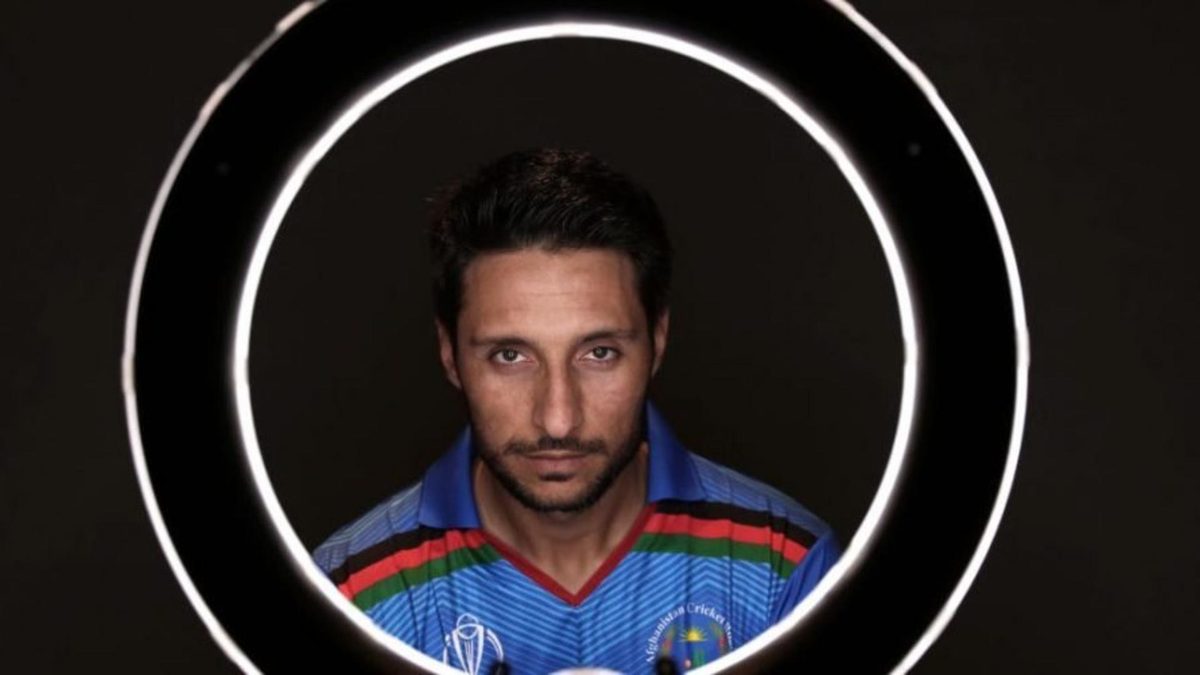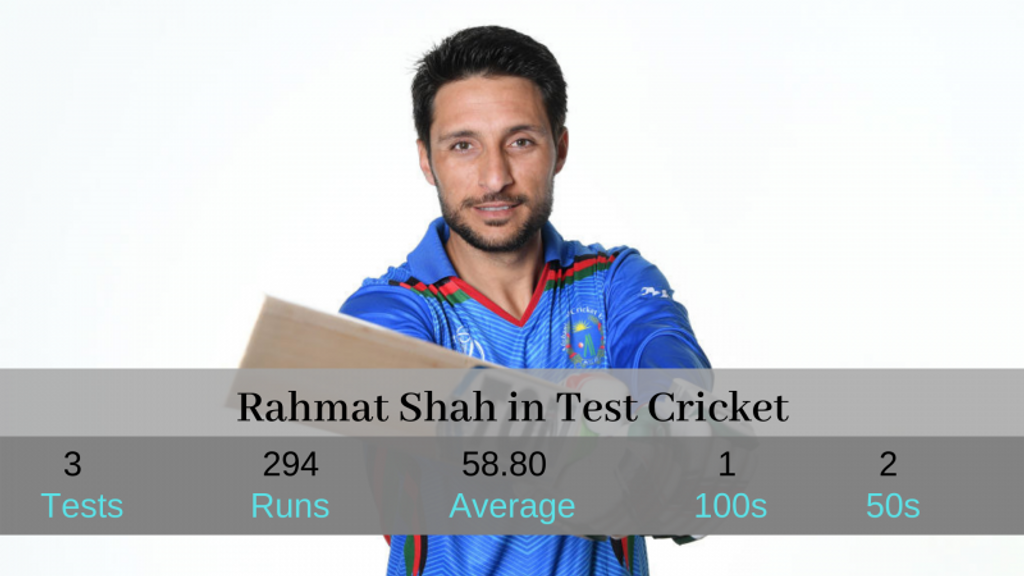
Afghanistan’s No.3 has all the right ingredients to succeed in Test cricket. But could it lead to something big and make him the man to lead Afghanistan’s transition into a red-ball force to be reckoned with, asks Rupin Kale.
When Rahmat Shah became the first player from Afghanistan to score a century in Test cricket on Thursday, September 5, it was more the realisation of an expectation than a pleasant surprise.
Coming in to bat with Afghanistan at 12-1, Rahmat steered Afghanistan past the 200-run mark with his 187-ball 102 against Bangladesh in Chattogram. It was a terrific effort from the Afghanistan No.3, who not only scripted history with his knock, but also put his side in an assertive position against a World-Test-Championship side.
“They were bowling well, so it was my plan to play off the front foot,” said Rahmat after the day’s play. “They had a good field set up for me. I was forced to use the crease as well, as there wasn’t a lot of run-scoring opportunities. We know they are good spinners, especially Shakib Al Hasan. Mehidy Hasan and Taijul Islam. We have a mindset [to tackle] the fast bowlers, but they have spinners.”
Congratulations to @RahmatShah_08 who became the first Afghan player to score a century in Test Cricket. Shah hit 10 fours and 2 sixes in his innings. #AFGvBAN pic.twitter.com/w2nJH3TU1Y
— Afghanistan Cricket Board (@ACBofficials) September 5, 2019
The numbers
When Afghanistan lost three wickets for 77 runs to Bangladesh’s firing spin attack, Rahmat did what he does best: he soaked up the pressure, anchored their innings and played a patient knock to steady the ship.
He had assumed a similar role in their World Cup 2019 campaign. While Afghanistan finished at the bottom of the table with no win against their name, Rahmat was their leading run-scorer, with 254 runs in nine innings, including one fifty, two 40s and two 30s. He did so in a team that had seen their captain changed right before the tournament, their star player sent home in questionable circumstances, and with his own batting position being consistently inconsistent.
When Wisden Cricket spoke to Afghanistan’s former batting coach Monty Desai in October last year, he mentioned the importance of Rahmat in their line-up. “Rahmat Shah – we named him the ‘Afghan Wall’ – is somebody who can consistently keep on scoring runs,” Desai had said. “Hopefully, he can come good in the long term.”
 Rahmat Shah’s Test numbers have been exceptional
Rahmat Shah’s Test numbers have been exceptional
While Rahmat returned decent numbers in the World Cup, he struggled to get big scores. This can be put down to two primary causes: a) he could not take his time, and b) he felt obligated to go for the big shots as their other batsmen struggled consistently. Against Bangladesh, Shah had more time to settle at the crease – he was batting on 8 off 31 balls at one point – and for most of his innings, he played alongside a reliable partner – his former skipper Asghar Afghan.
Rahmat’s numbers have been impressive since Afghanistan’s Test debut. The right-hander has two fifties and one hundred in five innings, with a sensational average of 58.80. He is currently their leading run-scorer in the format, with 294 runs, while no other player has crossed 200 (Afghan comes closest with 191).
congratulations both of # well palyed 🇦🇫👏👏👏👏 @RahmatShah_08 @MAsgharAfghan pic.twitter.com/YWBjLBInrl
— Najib Zadran (@iamnajibzadran) September 5, 2019
From heartbreak to ecstasy
While Rahmat became Afghanistan’s first Test centurion on Thursday, he came painfully close to that milestone in their first Test victory, against Ireland in March. He got out on 98 that day. The right-hander had said after the game that the coaching staff gave him hope back then, encouraging him to not lose heart after the close call. “This is cricket. There will be a lot more opportunities like this. Don’t lose heart. Don’t leave hope,” was their message to him.
In his innings against Ireland, Rahmat had looked a lot more impatient and hurried in the 90s: he had gone from 90 to 98 in just seven balls. Against Bangladesh, he looked visibly calmer and played his natural game, going from 90 to 102 in 30 balls. Cricket becomes beautifully poetic sometimes: he had Asghar at the other end on both occasions.
“I was dreaming to become the first century-maker for Afghanistan,” Rahmat said after the milestone. “When I got out for 98, I was really upset. Today, I got the chance to score the hundred. It is a proud moment. I also got the first Test fifty for Afghanistan, and now I am the first century-maker.”
Well played Shah the great @RahmatShah_08, first ever centurian in test cricket for @ACBofficials. Love u and proud of u. pic.twitter.com/dbZVjWSeNg
— Shafiq Stanikzai (@ShafiqStanikzai) September 5, 2019
What makes Rahmat tick in Test cricket?
Along with Hashmatullah Shahidi, Rahmat has the technique to succeed in Test cricket for Afghanistan. Along with Afghan, he has the right temperament. The fact that he did not lose his head after the Test captaincy was taken from him, before even playing a game, shows that he has the maturity to navigate the unique pitfalls that every elite cricketer faces in his career.
Moreover, he’s still 26, which means Rahmat is yet to get to the ‘peak’ most batsmen hit in their late twenties and early thirties. Additionally, with Afghanistan slated to play their ‘home’ matches at Dehradun and most away games in subcontinental conditions, they will contest on spin-friendly tracks more often. Rahmat, who faces Mohammad Nabi, Rashid Khan, and Mujeeb Ur Rahman in the nets, knows how to play spin better than seam.
In a line-up where most batsmen are aggressors, Rahmat plays the role of the anchor. “Almost everyone in our team prefers long hit,” he had said after his 98 in March. “I am the only one in our team – the coach and captain also say this – who plays along the ground. I don’t go for hits, I wait for the bowlers to give me runs.”
While Afghanistan are taking baby steps in Test cricket, they have played a lot of first-class cricket over the years. They won the Intercontinental Cup for Associate nations in consecutive editions in 2010/11 and 2015/17. As expected, Rahmat has been one of their best batsmen in the competition, with 601 runs in 11 innings, including two centuries and four fifties. He also boasts Afghanistan’s highest batting average in the tournament, among players with more than 220 runs.
While Rahmat has all the ingredients to make it big in Test cricket, there are a few areas of weaknesses he can improve on. He still looks a bit jittery before (and after) a major milestone, and needs to remain relaxed in those situations.
With Afghanistan cricket at a crucial juncture, they need strong and composed characters like Rahmat more than ever right now. Can he be the player to pioneer their Test revolution? The signs look positive so far.








